Mastering the elements of a successful content strategy can feel like trying to tame a wild beast.
You know it’s crucial for your business, but where do you start?
The truth is, without understanding these elements of a successful content strategy, you’re essentially shooting in the dark. And that’s no way to grow a business.
Your content plan isn’t just about throwing words on a page and hoping they stick.
It’s about crafting valuable information that resonates with your audience and drives them toward action.
Table Of Contents:
- The Role of a Content Strategy in Your Business
- Setting Clear Content Strategy Goals
- Decoding Your Target Audience with Research
- Building Trust through Consistent Brand Voice and Tone
- Mapping Out Your Content Production Process
- Effective Distribution Channels for Your Content Strategies
- Measuring Success Through Analytics: The Compass of a Content Marketing Campaign
- FAQs in Relation to Elements of a Successful Content Strategy
- Conclusion
The Role of a Content Strategy in Your Business
So, you’re wondering how crucial a good content plan is for your small business?
It’s like the backbone supporting and directing all your marketing efforts. Content goals show you what to create, when and where to share it, and who will do the heavy lifting.
A successful content plan can make or break your brand image. With a solid plan, this positions you as an authority in your field and drives more leads than traditional marketing methods.
Your effective content plan defines which topics should be on top of mind while creating blog posts or social media updates based on market trends and customer preferences. And guess what? All these are aligned with achieving those big-picture business goals.
In essence, having a good content plan means delivering value throughout every stage of the customer journey – from raising awareness about offerings through educational articles to nurturing relationships post-purchase via email newsletters.
Analyzing Metrics: The Key To Success
To understand if our hard work is paying off, we need numbers. Tracking metrics gives us insights into our performance so we can keep improving. HubSpot’s guide suggests some key performance indicators (KPIs) used by successful marketers for measuring their progress toward their goals.
We’re talking website traffic stats, bounce rates, average time spent per visit, new vs. returning visitors ratio, etc., depending on whether our goal was increasing site visits or enhancing user engagement.
And hey, don’t forget social media analytics too. These analytics give valuable information about follower growth rates across different platforms and likes, shares, and comments received per post, helping adjust strategies accordingly.
Last but not least, always remember “Content Is King.” So let’s start creating high-quality, engaging stuff, folks.
A robust content plan is the backbone of your small business, guiding all marketing efforts and boosting the brand image. It aligns with big-picture goals, delivers value at every customer journey stage, and relies on metrics for continuous improvement. Remember, folks – Content Is King.
Setting Clear Content Strategy Goals
A successful content plan is like a well-oiled machine, but the fuel that keeps it running?
Your goals.
We’re talking about SMART (Specific, Measurable, Achievable, Relevant, and Time-bound) goals.
The type of content you create and where you share it can change drastically depending on these objectives.
For instance, if building brand awareness in new markets tickles your fancy this quarter, consider engaging blog posts or social media blasts to get the word out.
Aligning Content Strategies with Business Objectives
Every piece of content you create should be tailored to your business objectives.
Your efforts should not be wasted but contribute towards achieving something tangible.
This alignment ensures that all those hours spent brainstorming topics and crafting sentences aren’t wasted – they’re driving towards achieving something tangible for your business.
Say one goal is increasing website traffic by 20% over three months: SEO-optimized blogs could become your best friend. They attract organic visitors from search engines like bees to honey.
Or perhaps customer retention has been keeping you up at night recently – personalized email newsletters might help keep customers engaged while subtly upselling them on additional products or services without coming off as salesy.
Do you see how setting clear goals makes measuring success easier than ever before?
It gives us benchmarks we can use to evaluate our marketing efforts periodically so we know when things need tweaking along our journey toward becoming a trusted authority in our field through effective content strategies.
The Content Marketing Institute provides more insights into developing such strategies effectively.
Decoding Your Target Audience with Research
Your content plan’s success hinges on understanding your audience.
With thorough market research, you can tap into the pulse of your target demographics, unraveling their needs, desires, and challenges while discovering what type of content strikes a chord with them.
The key to this lies in creating ideal customer personas. These fictional yet data-driven profiles give you a clear snapshot of who exactly is at the receiving end of your content marketing efforts.
Finding Market Gaps through Competitive Analysis
Beyond knowing your audience well, the competitive analysis gives valuable insights into how other businesses engage similar audiences. It helps spot gaps or opportunities competitors overlook, which could be goldmines for unique business offerings.
This process not only positions you as an authority within its field but directly caters to the interests and needs of those folks we’ve been talking about – yes, our dear target audience.
Gearing Content Towards Identified Opportunities
- Create compelling blog posts around topics untouched by competition.
- Craft social media campaigns that speak directly to uncovered consumer pain points.
- Publish insightful articles answering unaddressed questions within industry forums, etc.
Building Trust through Consistent Brand Voice and Tone
A consistent brand voice is like a familiar face in the crowd for your audience.
It’s not just about what you’re saying but how you say it that builds trust.
Consistency extends beyond mere words – it permeates every facet of content creation, from blog posts to social media updates.
The Art of Crafting a Consistent Voice
Your brand personality should be reflected consistently throughout your content marketing efforts. Whether you opt for an authoritative or friendly approach or serious or humorous undertones – stay true to these traits when you produce content and strive for a successful marketing strategy.
- Create guidelines: Define key aspects of your brand’s persona, such as its values, and mission statement, which will serve as guiding principles during the content production process.
- Maintain uniformity: Ensure everyone involved in producing high-quality content, managing content, and content repurposing adhere strictly to these established guidelines irrespective of their roles within the organization.
- Evaluate regularly: Keep checking if everything published aligns with those defined characteristics so there’s no disconnect between different pieces produced by various team members. This helps maintain continuity while reinforcing trust among customers over time.
Mapping Out Your Content Production Process
Your content production process is a key player in your successful content marketing strategy. It’s not just about crafting high-quality, engaging content – it’s also about the strategic planning behind when and how to produce that valuable material.
An editorial calendar can be an indispensable ally here. This tool helps you orchestrate various elements to produce content, from generating innovative topic ideas to deciding on appropriate formats, scheduling publishing dates, and delegating tasks among team members.
Tuning Up Your Create Content Workflow
In small businesses where resources might be stretched thin, tuning up the content creation workflow becomes even more crucial.
One method involves focusing on a consistent theme or subject for your blog posts over specific periods. Doing so allows you to research and write multiple pieces around similar topics, which saves time while ensuring depth in each piece.
You could also utilize tools like HubSpot’s Blog Topic Generator, offering numerous title options based on keywords provided by you. These automated suggestions can reignite creativity during brainstorming sessions when idea wells run dry.
Besides these strategies, consider batch-producing social media posts or blogs – setting aside dedicated chunks of time specifically for the ideation phase, researching subjects, or drafting articles all at once instead of intermittently throughout the week.
This practice significantly streamlines an effective and great content plan producing high-quality content without overwhelming limited resources.
Effective Distribution Channels for Your Content Strategies
Your content marketing strategy isn’t complete without considering the distribution channels.
The right platform can make all the difference, connecting your valuable content with your target audience.
We’re talking about earned, paid, and owned media here.
Earned is when others share or talk about you (think word-of-mouth), while paid involves advertising where space costs money.
Owned? Any channel under your control, like websites, blogs, or social accounts (not fully yours to own, but that’s a different story).
Leveraging Social Media for Content Distribution
Social platforms are a goldmine for reaching diverse audiences directly and tailor-make content based on user behaviors.
According to industry studies, the big names in this game vary depending upon age groups – Facebook tops among adults, followed by YouTube, Instagram, TikTok, LinkedIn, etc.
But it’s not just creating high-quality posts that counts; timing matters too.
To get more eyeballs on your posts, schedule them when users are most active online. Remember, tracking metrics play a vital role in understanding the performance of these efforts toward achieving your content marketing goals.
Measuring Success Through Analytics: The Compass of a Content Marketing Campaign
Ever wondered how successful marketers gauge their content marketing endeavors?
It’s through the power of analytics.
These numbers and graphs are not just mere data; they serve as a compass, guiding you toward understanding your content performance.
Navigating Your Strategy Based on Content Performance Metrics
Analytics isn’t all about measuring success; it also provides valuable insights that can help shape future strategies.
This ongoing optimization process involves adjusting your content marketing KPIs based on what’s working best for engagement and conversion.
If certain types of posts consistently outperform others say video tutorials compared to blog posts, you might want to consider shifting resources accordingly.
Or perhaps post timings could be tweaked based on when users are most active online according to tools like Sprout Social.
- Taking note of high-performing content types (like videos over blogs).
- Adjusting times to deliver content in line with audience activity patterns.
The magic behind analytics lies in its ability to transform raw data into actionable intelligence that drives strategic decision-making within a great content strategy.
FAQs in Relation to Elements of a Successful Content Strategy
What are the elements of a successful content plan?
The winning elements of a successful content plan involve setting clear goals, understanding your audience, maintaining brand consistency, planning and producing quality content regularly, distributing effectively across channels, and measuring success through analytics.
What are the 3 C’s of an effective content strategy?
The three C’s in an effective, successful content marketing strategy stand for creation (producing high-quality material), curation (collecting valuable information relevant to your audience), and circulation (distributing it strategically).
What are the 4 pillars of a good content strategy?
The four pillars that uphold robust content strategies include substance (what you say), structure (how you present it), workflow (processes behind creating and delivering), and governance (Content Strategy Inc‘s term for managing ongoing processes).
Conclusion
A content plan defines the lifeblood of your business.
It’s more than just words on a page; it’s about crafting content ideas and valuable information that resonates with your audience and drives them toward action to achieve your content marketing plan.
The role and elements of a successful content strategy lie in driving leads, reducing costs compared to traditional marketing, and positioning your business as an authority cannot be understated.
Setting clear goals for your content marketing plan is crucial. Aligning these goals with overall business objectives ensures every effort contributes directly to achieving organizational milestones.
A deep understanding of the target audience through research provides insights into their preferences and helps identify market gaps you can fill with unique offerings.
Maintaining consistency in brand voice across all communication channels builds customer trust, while effective distribution channels ensure a wider reach for your content.
Analyzing metrics regularly allows you to adapt strategies based on performance indicators, ultimately leading to success.
In essence, mastering elements of a successful content plan involves setting clear goals, understanding the target audience through research, maintaining a consistent brand voice and tone, and planning production processes effectively. It also includes choosing appropriate distribution channels and measuring success using analytics.
If you’re ready to elevate your business by leveraging these elements or need help repurposing existing content into fresh, engaging pieces that build your brand’s name and help your audience take action, schedule a free call with me today.




